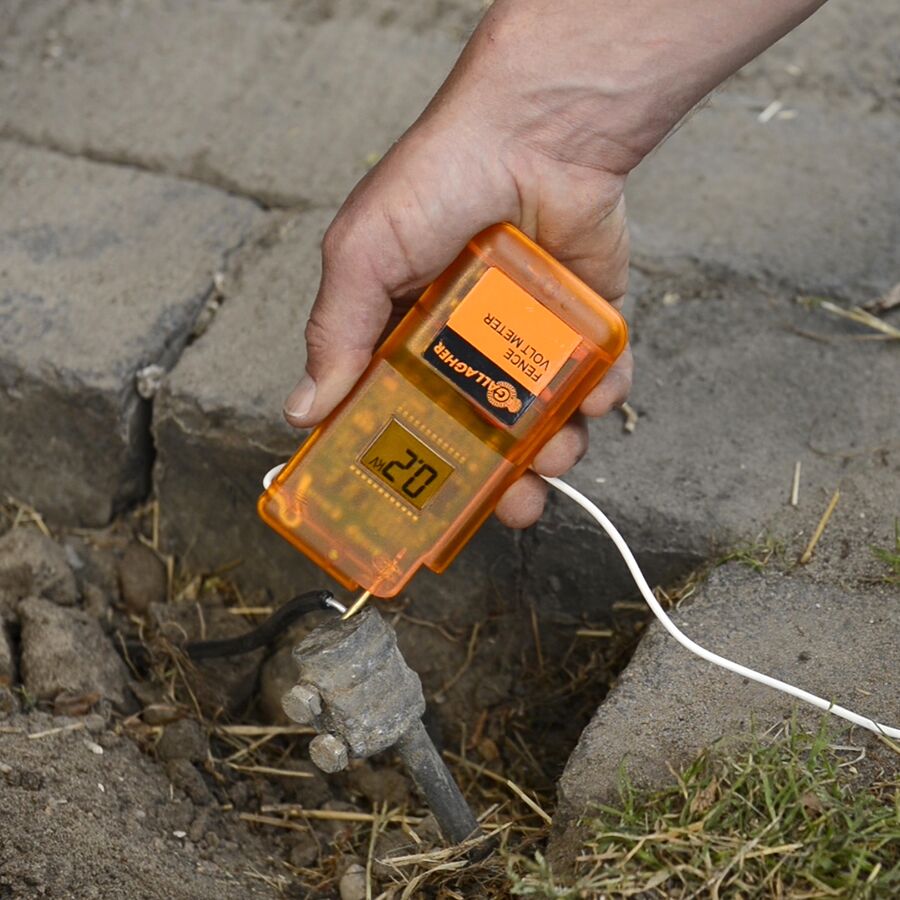How to test the earthing system of your electric fence
Tuesday, 16 August, 2022

The earthing system of your electric fence must be as conductive as possible for the fence to give the animal an effective shock. A simple guide is one earth stake for every five joules of stored energy with a minimum of three earth stakes.
Additionally, you will need to set up your electric fence according to how ‘green’ the area is all year round.
All Live Wire System - best suited for wetter regions
For use in greener regions with good earth conductivity. All fence wires connect to the red terminal on the Energizer and a shock is delivered to an animal when it’s touching the ground and the fence at the same time.
Testing on All Live Wire Ground System
This should be done once a short section of fence has been built. You should test your system at least once a year at the height of any dry period to ensure the grounding capacity is sufficient for the joule rating of the energizer.
Short the fence out at least 330’ away from the ground system by using several ground rods between the wires and the ground. Reduce the fence voltage at this point to 2000V (2kV) or less.
Using a Volt Meter, measure the voltage between the wire connecting through the ground rods to the Energizer ground terminal and an independent ground rod. This rod should be a galvanized metal rod, minimum 8” long. Place the rod 3’away from the ground rods or as far away as your Volt Meter cable will reach.
There should be no reading on the Volt Meter; however, up to 200V (0.2kV) is acceptable. If the voltage is higher than this, switch off the Energizer, drive in more ground rods at the recommended spacings and connect them to the existing ground system until the voltage is down to the acceptable level.
Earth Return Wire System – Best suited for drier regions
For use where the ground struggles to conduct enough power (for year-round dry, frozen or snow conditions). The live and earth wires on the fence create the shock when the animal touches them both at the same time.
Testing a Ground Return Wire System
Install a 2m earth stake as close a possible to the end of the fence. Install a 500ohm load tester between a hot wire and ground wire. Choose the location for the ground rod in a damp area if possible. If you cannot find a damp area, the ground test may be unreliable.
Using a Voltmeter, measure the voltage between the hot wire and the ground wire across the load tester you just installed. Next measure the voltage between the hot wire and the independent ground rod, leaving the load tester in place.
If the second voltage reading exceeds the first by more than 1000V (1kV) check the ground return wire for loose connections. Finally, connect the independent ground rod to the ground return wire as a permanent connection. Extra ground rods can be added at various places around the fencing system and connected to the ground return wire to improve ground performance.
If the first voltage reading is less than 3kV, your fence system is at risk of poor animal control. Assuming that your ground wire return checked out satisfactorily, check that the fence hot wire has good connections. If connections are good, it is possible that your energizer is too small for your fence system.